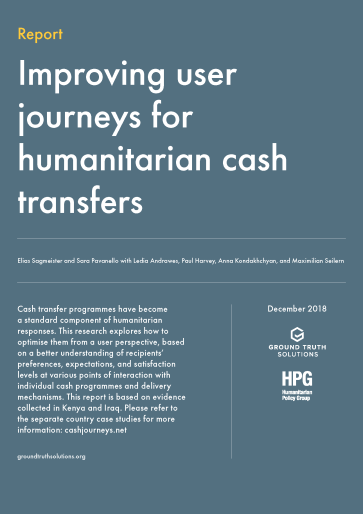Improving user journeys for humanitarian cash transfers
Humanitarian agencies are increasingly using digital payments, such as mobile money, pre-paid or smartcards, bank cards and electronic vouchers, to deliver cash assistance to affected populations. At the same time, the analysis and use of payment technologies have become more important, as have partnerships with financial service providers and other stakeholders. Joint efforts have taken place among humanitarian agencies, donors and private sector actors to develop a common vision around what can be achieved through digital payment systems and to strengthen partnerships and cooperation. Humanitarian agencies have also developed guidance and tools, often in the form of sequential decision trees, to inform the choice of cash delivery methods, in addition to other aspects of programme design and implementation.
While these initiatives and existing guidance include some user-level considerations – such as the need to understand cash recipients’ needs and preferences around payment mechanisms, potential safety risks, opportunities for boosting financial inclusion and others – the experiences and preferences of cash recipients around delivery mechanisms remain poorly understood.
The purpose of this research project, commissioned by DFID and implemented by Ground Truth Solutions in collaboration with the Humanitarian Policy Group (HPG/ODI) and Oxfam, is to start addressing this gap and to improve evidence on how transfer systems satisfy people’s needs and expectations.



